

With Murf studio, you can easily convert text-based educational content into a more convenient audio format, make necessary edits, all with just one click, in real time.
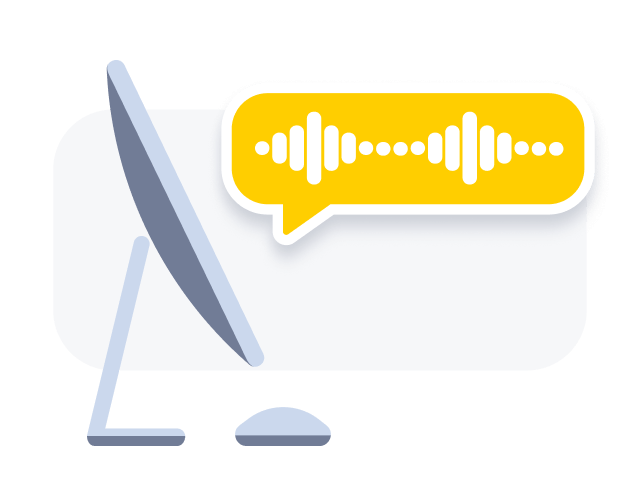
Use customization features like pitch, emphasis, and pause to add more character to your elearning voice and deliver engaging experiences for online learners.

From inviting, conversational, and light tones to soft-spoken, high-pitched, excited, loud, and friendly voices, we have voices that are appropriate for different types of e learning course.
Developing eLearning modules can often prove to be a time-consuming and stressful process, even for the most experienced eLearning professionals. However, with Murf, it's fairly simple. All you have to do is select an AI voice from Murf’s vast range of male and female TTS voices across different languages and accents. You can also add video or slides to Murf and adjust the timing to match your content with your visuals.

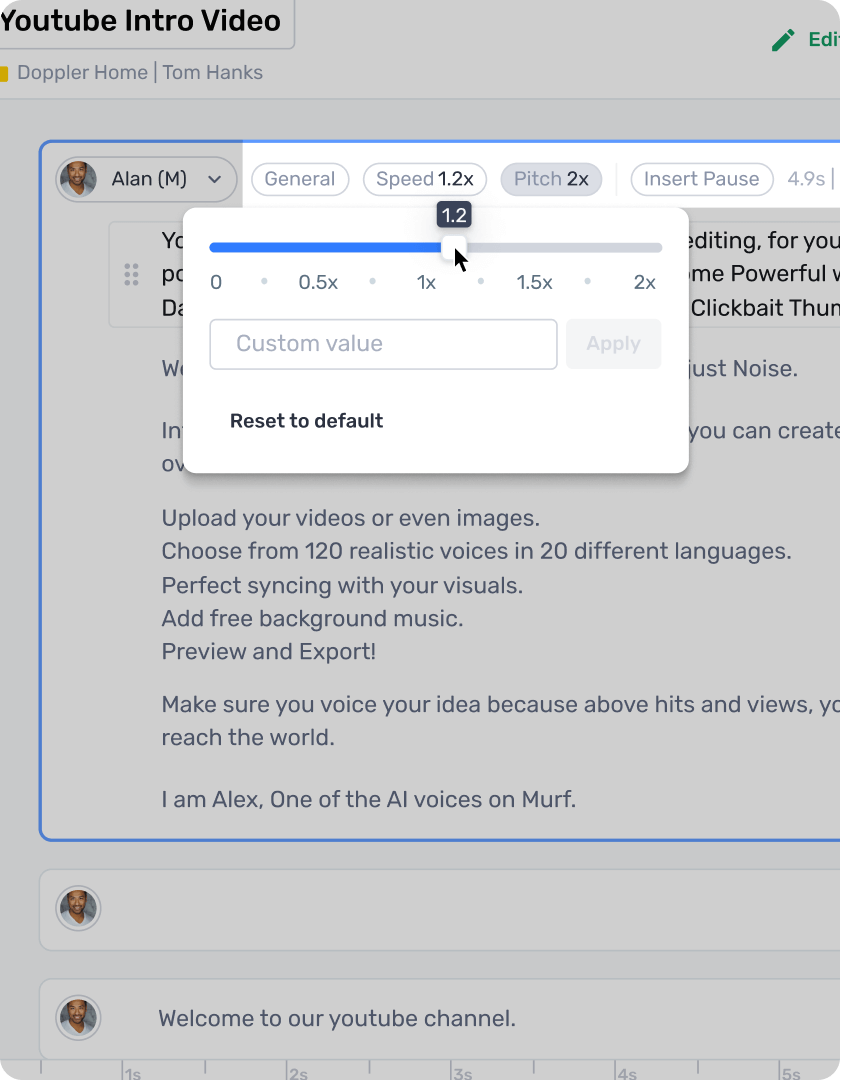
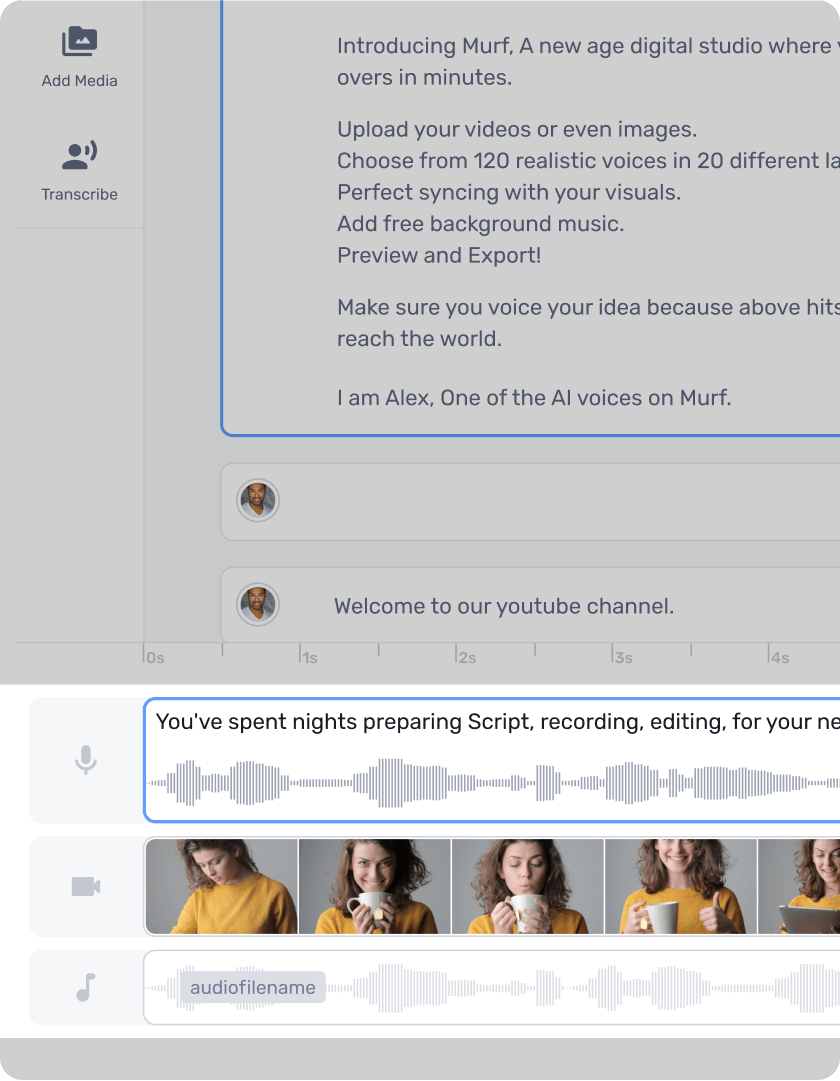
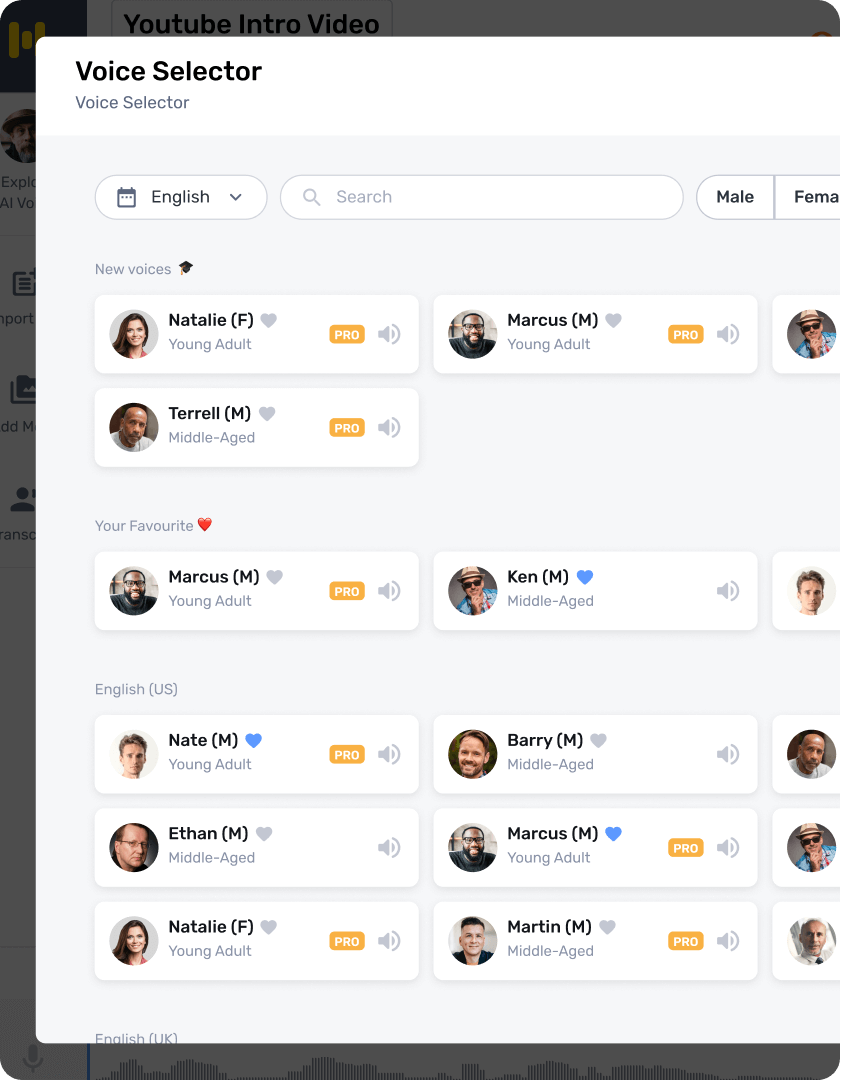
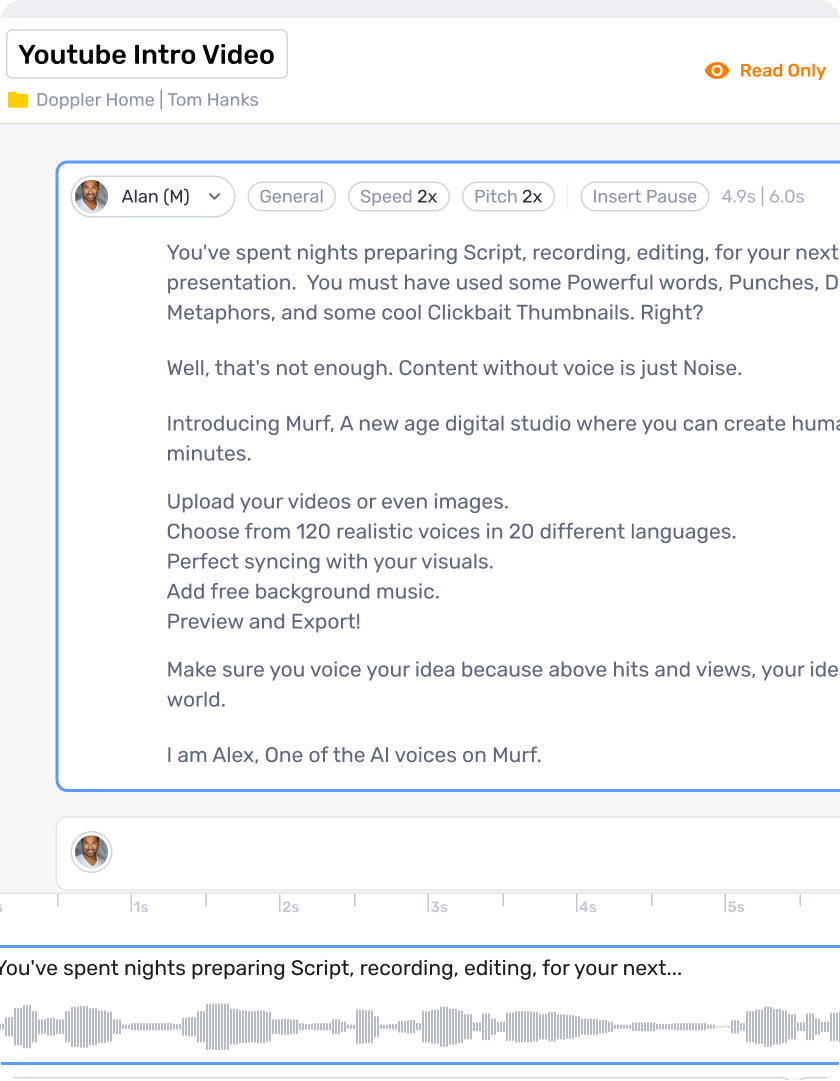
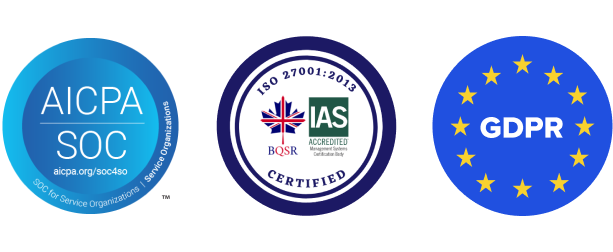
When it comes to elearning modules, crafting a hard-hitting online course that's clear, memorable, and concise is only half the battle. The other half is making the content interesting and immersive through the use of voice to keep the learners engaged. Irrespective of whether you are on the business or academic side of things, a compelling and impactful e learning narration will help online learners grasp and understand their course better. Adding a natural-sounding voice over to an online learning module helps users master new knowledge faster.
Voice overs can also help your training feel inclusive. As an educator, if you are covering complicated topics or providing detailed directions, using audio can help to simplify and humanize your educational content. The combination of audio and visual cues in e learning modules improves perception, memory, and knowledge retention. Murf makes it easier for you to put multiple elements of your e learning project together, sync them up, see a preview, and adapt your output files for various media platforms.
Voiceovers also play a huge part in creating a difference for the disabled and helping them learn and engage with their course material. For example, a blind person can use voice over to read aloud and hear text on the screen. In addition, by providing an audio description of visual content, voiceovers helps low-vision students understand what they are seeing on the screen and enhance their learning process. Voice over also gives learners, who have difficulty reading print, access to all written materials.
The number one aspect to keep in mind is that the elearning script should be easy and entertaining to listen to. So, avoid using overly complicated language or long sentences. Sometimes, sentences sound better in your head than they do when spoken aloud. Hence, always hear the audio recording before finalizing and watch for complicated sentences and reword them. It is equally important to ensure that your punctuation is on point; use commas or ellipses strategically to indicate pauses.
Human-recorded voiceovers are generally considered more personable and engaging than AI audio because people can add more emphasis and emotion to their speech. They can also manually check pronunciations and make thoughtful decisions on delivery.
However, if the voiceover is recorded by someone that has no training in narration or voice acting, delivering a clear and engaging speech can be difficult. There might be numerous rounds of recording if errors are made, pauses are placed in the wrong spots, words are pronounced in the wrong way, among other things. Even after all this, the final audio can be compromised by the recording environment and equipment.
Another drawback with live recorded audio is a lack of flexibility. If you are looking to create multilingual content, switching between multiple languages and voice actors means hiring and managing multiple speakers. This compromises the ability to choose the best voice for each piece of content.
AI voiceover software, on the other hand, offers more consistency and reliability, as well as flexibility. Firstly, it requires significantly less time, money, and expertise to produce voiceovers using AI. Secondly, users can choose from a wide variety of AI voices in multiple languages, accents, styles, and gender. Voiceover software also offers the ability for users to change the pitch, speed of elearning narration, volume, add emphasis, and custom pronunciation to fine-tune the voiceover to match the situation or script. Furthermore, today's voiceover software provide the option to create custom voices. This means you can clone your own voice or the voice of a person on your team, or you can work with a professional voice actor to create an engaging and unique brand voice. Some software, like Murf, also provides the ability for users to change the gender of their voice from male to female and vice versa and remove unwanted background noise from the voiceover without the need for another software.
There is no doubt that with the quality of synthetic speech catching up, and in some ways surpassing, human voice over, the balance is slowly tipping in AI's favor.
Using the right voice over can make or break an e learning course. Establishing target demographics and areas of action remains crucial to finding the right elearning voice. You don't want a voice talent that speaks at a million miles per hour. Rushing through any narration will make people lose interest fast. Hence, it's key to have a pace that is more leisurely.
It is also equally important to ensure the voice is clear, conversational, and easy to understand. Avoid using distracting sound effects and voiceover that may be too dramatic or over-the-top, such as narrations with heavy accents or character portrayals. For example, if you are training nurse practitioners in a scenario-based training module, you would want the voice talent to invoke a sense of urgency when acting out an emergency. Or, a voice that sounds professional, calm, and respectable, like a physician.
Murf's text to speech software completely eliminates the complex process of hiring a professional voice artist, renting a recording studio, and recording and editing the voice to convert it to an AI voice.
Murf offers an extensive range of friendly and compassionate elearning voices, which not only sound natural but also help make your content clear and engaging for your audience. Among the other benefits of using Murf software is, it enables learners to easily connect with the subject matter.
There are two main categories of elearning voiceovers: educational voice over and corporate voice over. Educational voice over finds application in illustrative YouTube videos, podcasts, audiobooks, university audio online courses, and as an aid for the disabled, just to name a few. A more formal, professional voice with an authoritative and welcoming tone suits well for an academic elearning video.
Corporate voice over, on the other hand, is usually in the form of user manuals, video/audio modules, and presentations. For example, there is a lot of information a new hire or staff needs to absorb when they start with an organization, and as they continue on their professional development journey. Choosing a professional, business-like voice that is a happy blend of informative, casual, and convincing tones is the right fit for a corporate training material.
Using Murf studio's pronunciation functionality, change the pronunciation of certain words in your elearning module based on your target audience.
Use the 'Emphasis' feature in Murf to accentuate important words in your e learning script.
With the 'Pause' button, you can include varying lengths of pauses to your elearning module and enable your audience to effectively absorb and process the information, rather than rushing them into the next topic by filling every second with narrative.
If you are offering an elearning course to a diverse group of people, you should entertain the possibility of translation and offering your courses in different languages. This will be the key to success in reaching a bigger audience.
With Murf's voices across 20+ languages, you can choose an AI voice in the channel that best fits your target audience. You can also create voice overs in your native language to better connect with your students across the world.
As an academic or business course creator, you are familiar with Google Slides for presentations. You can now add voice over to your Google Slide presentation using Murf, available as an add-on. It allows you to write and edit your voice over script while maintaining consistent quality in creating your presentations on Google Slide.
Every individual is unique, so is their ability to learn and understand. With technology like TTS and software like Murf, you can hand over the voiceover work to AI and seamlessly convert text-based educational content into a more convenient audio format. This makes it possible for learners to comprehend by listening while they are multitasking, on the go, or when they are just tired of staring at screens. Use Murf for all of this and more, at a fair price.